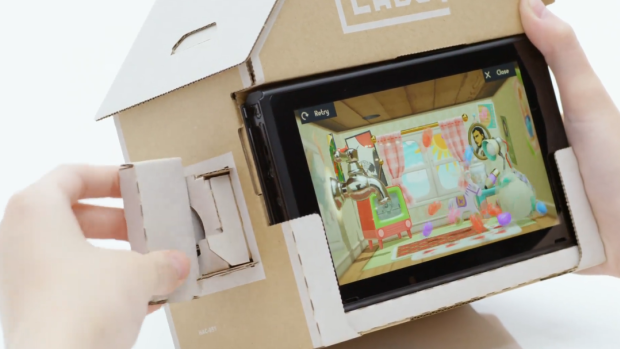Jan 17, 2018
Nintendo shares rise after unveiling Labo cardboard accessories for Switch
, Bloomberg News

Nintendo Co. (NTDOY.PK) surprised gamers and investors alike by unveiling new cardboard accessories which interact with games for its Switch console.
Nintendo Labo features cardboard sheets that users can pop out and fold into everything from motorbike handles to fishing rods and a miniature piano. The Switch’s detachable Joy Con controllers are then inserted, with their sensors detecting movement such as turning a corner to manipulate games on the screen. Shares of Nintendo rose as much as 3.3 per cent in Tokyo after the unveiling.
Focusing on physical ways to interact with software sets Nintendo apart in a gaming market where the majority of revenue is made by tapping a smartphone screen. The move is also a nod to the Wii a decade ago, which broadened the audience for Nintendo’s products by getting kids and grandparents alike to swing controllers and play virtual tennis and bowling.
“This is extremely fresh. It’s a surprise,” said Hideki Yasuda, an analyst at Ace Research Institute. “It’s hard to estimate how much it will sell. They’re targeting families, so likely kids will buy it first, but it could broaden to other generations."
Nintendo Labo will initially come in two sets that go on sale April 20 for US$70 and US$80 each. A video announcing the new product showed footage not mentioned on its website or in the press release, including a cardboard steering wheel and gas pedal, camera and gun-like controller. A Nintendo spokesman confirmed additional accessories are under development, but declined to say if and when they will be released.
With its roots as a manufacturer of toys and playing cards, the Kyoto-based company has a history of releasing physical accessories for its consoles, including Amiibo figurines for the Wii U and steering wheels and fishing rods for the Wii. Continuing that, Nintendo has long hinted the Switch will sit at the center of an ecosystem with numerous peripheral devices and attachments that could boost revenue.
“In terms of attachments to the core part that is the Switch, it may be appropriate to call them accessories,” President Tatsumi Kimishima said in an interview with Bloomberg in Oct. 2016. “You can assume that there will be a wider array.”
Nintendo isn’t alone in introducing physical accessories that interact with software. A year ago, rival Sony Corp. unveiled Project Field, a lightweight device the size of a kitchen cutting board that connects to real-world objects so they can be used for controlling games on smartphones and tablets.
Google has also embraced cardboard, with an assemble-yourself viewer that turns smartphones into virtual-reality goggles.






